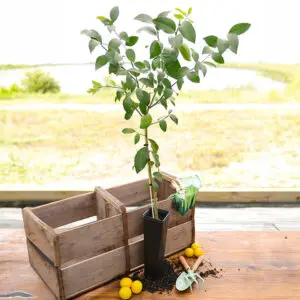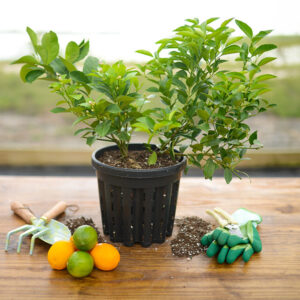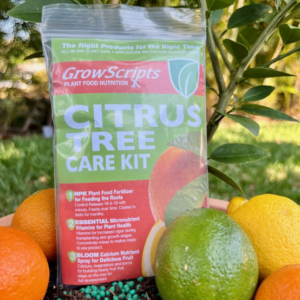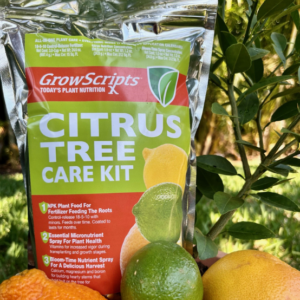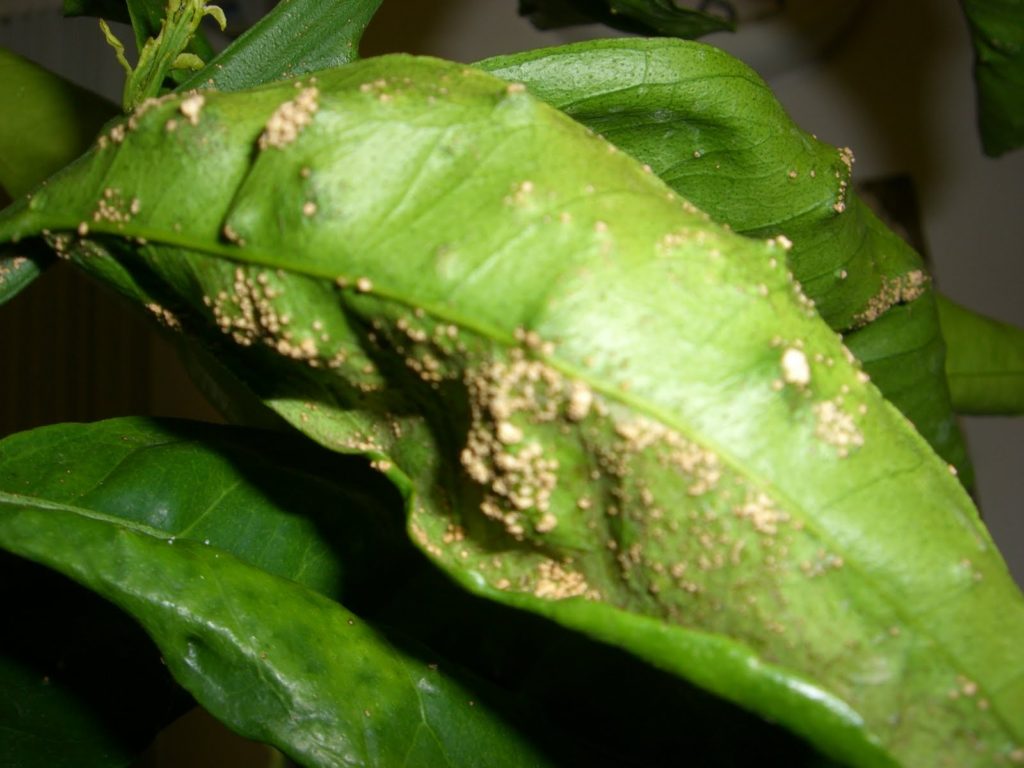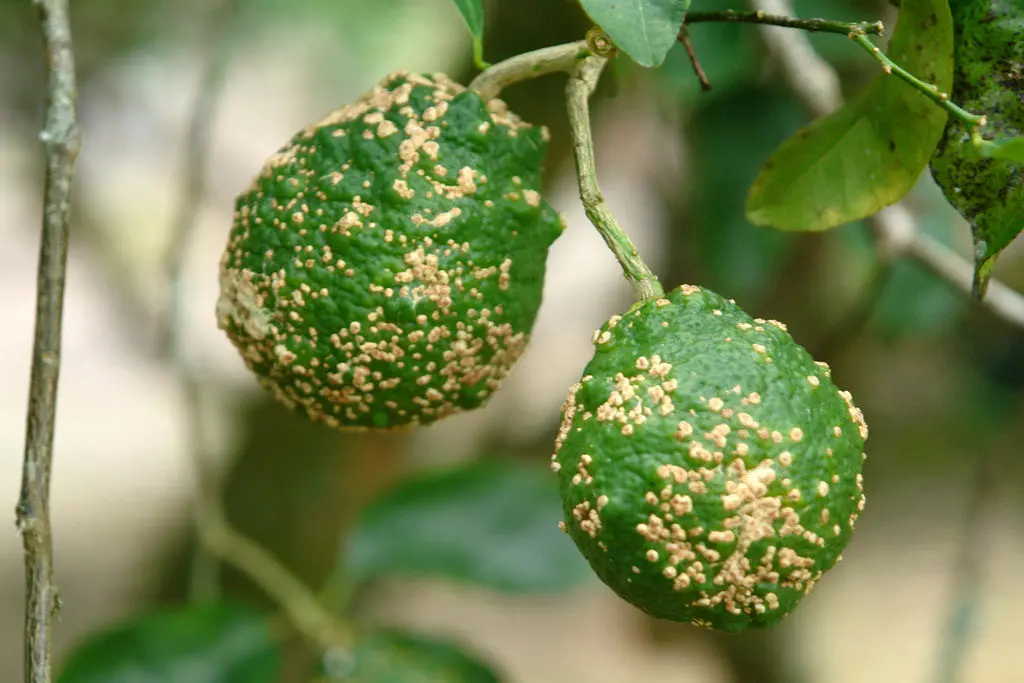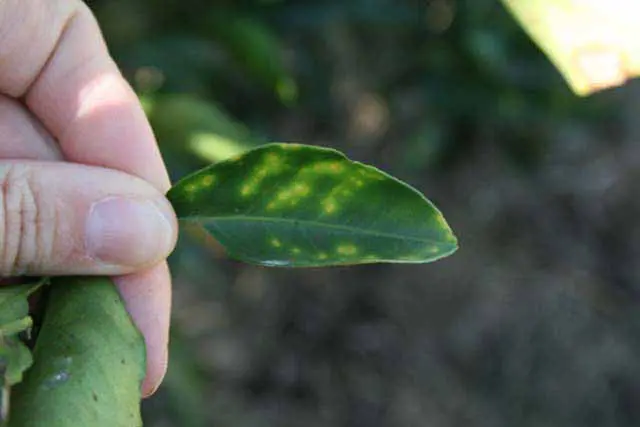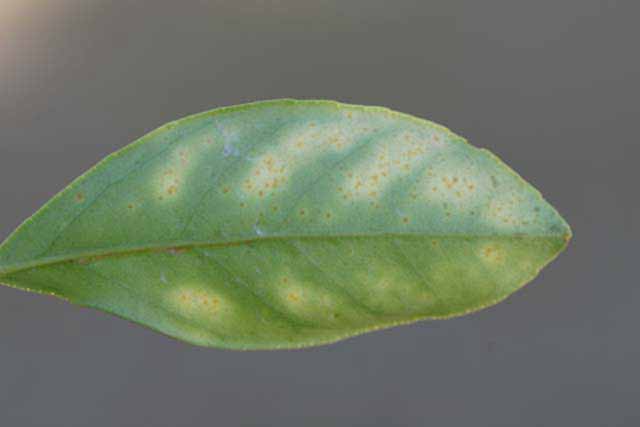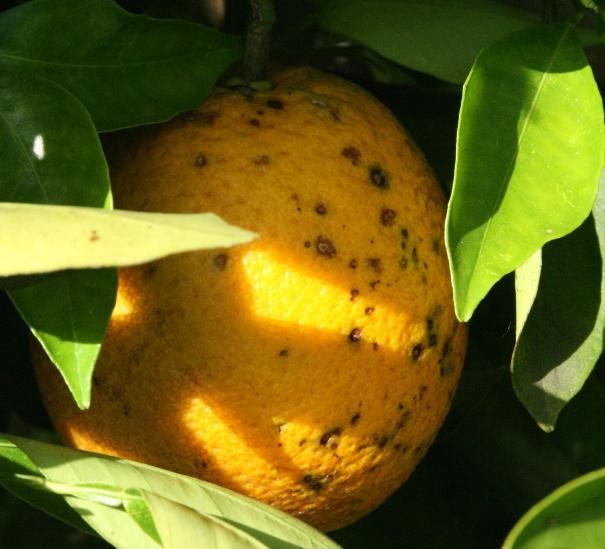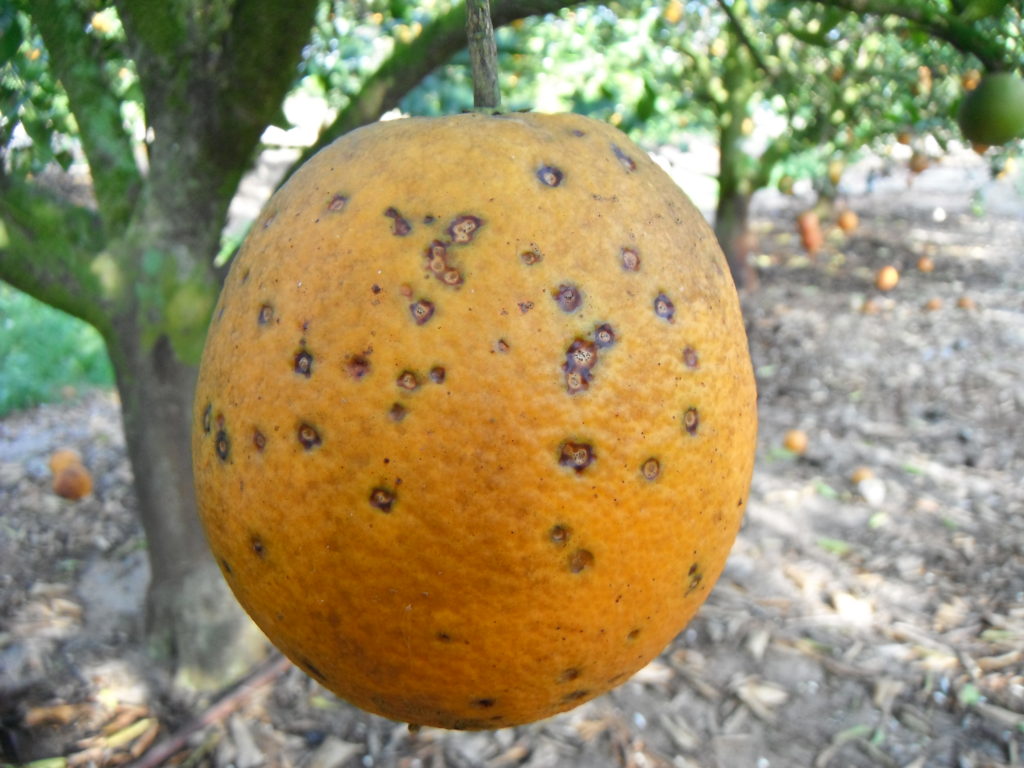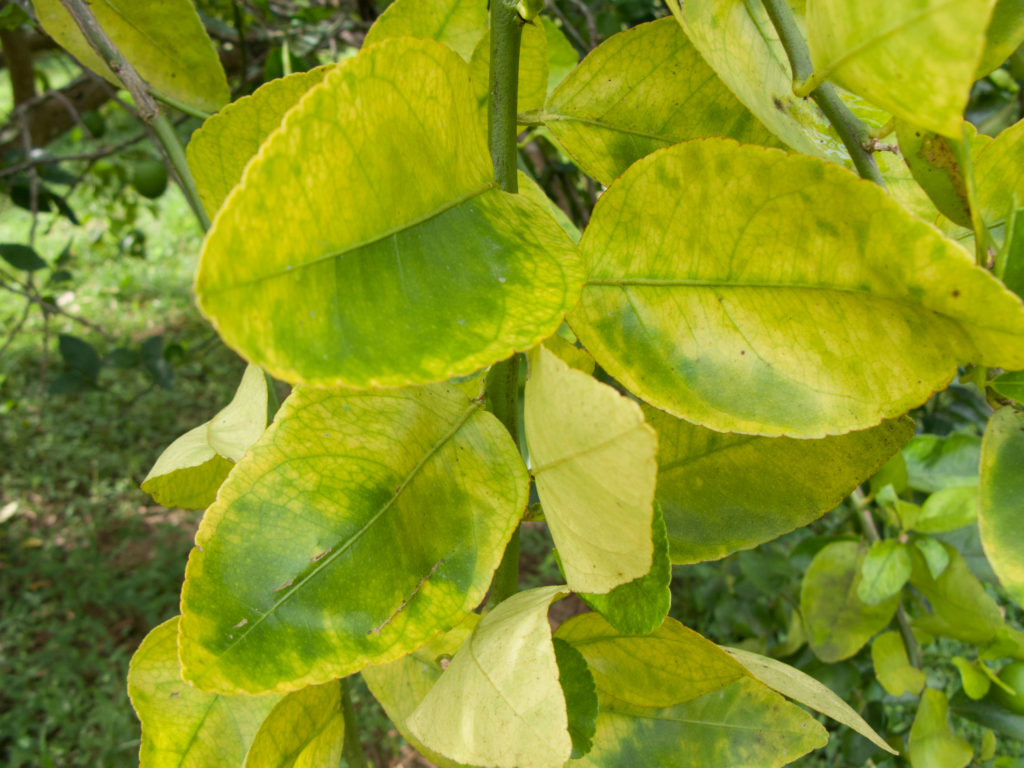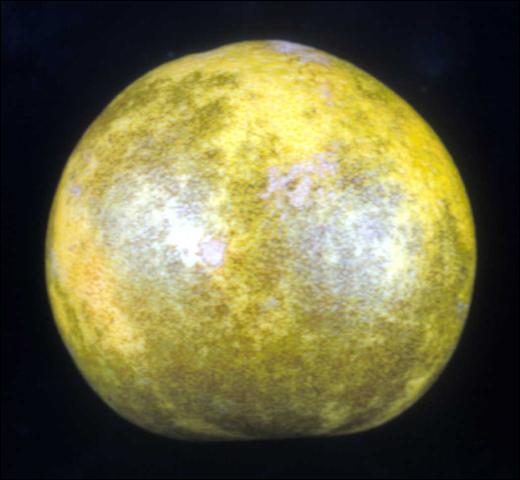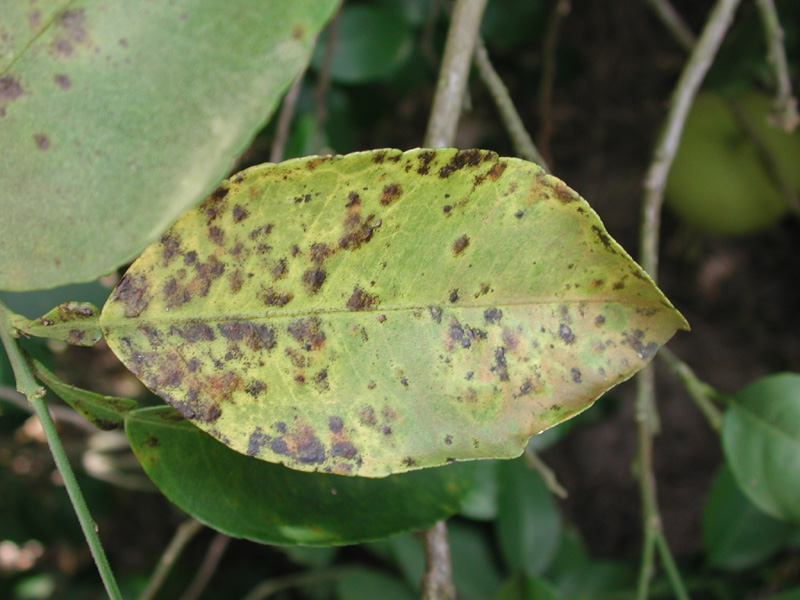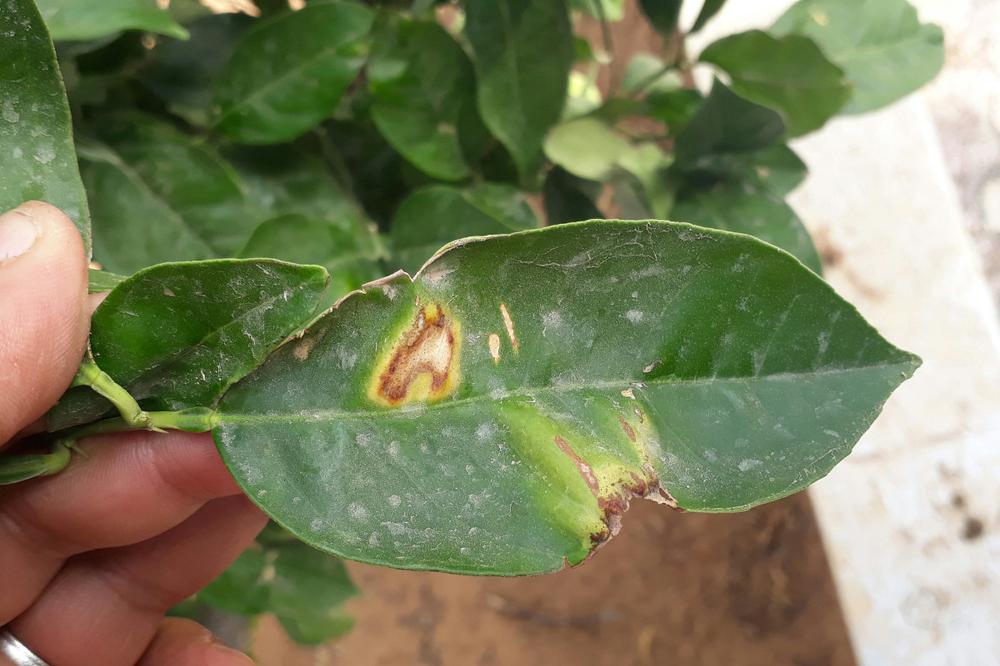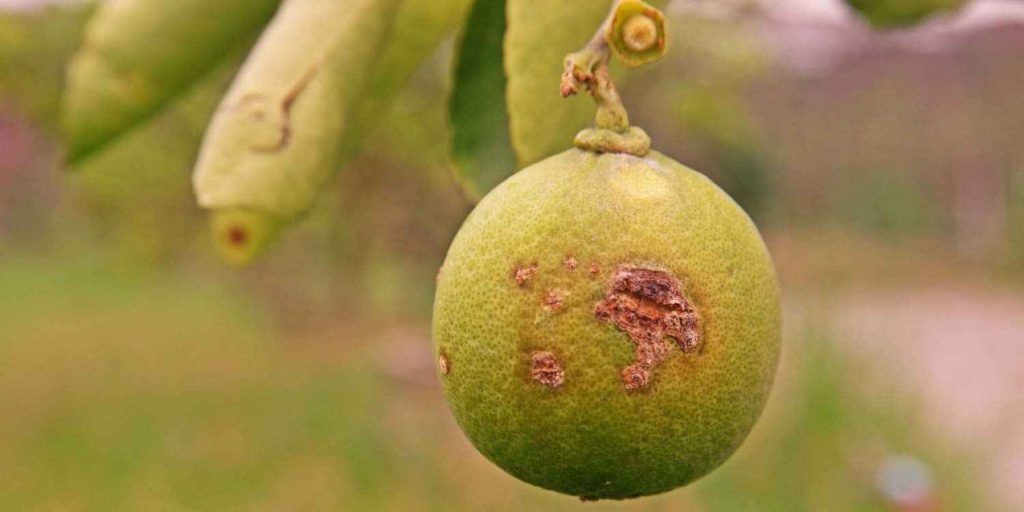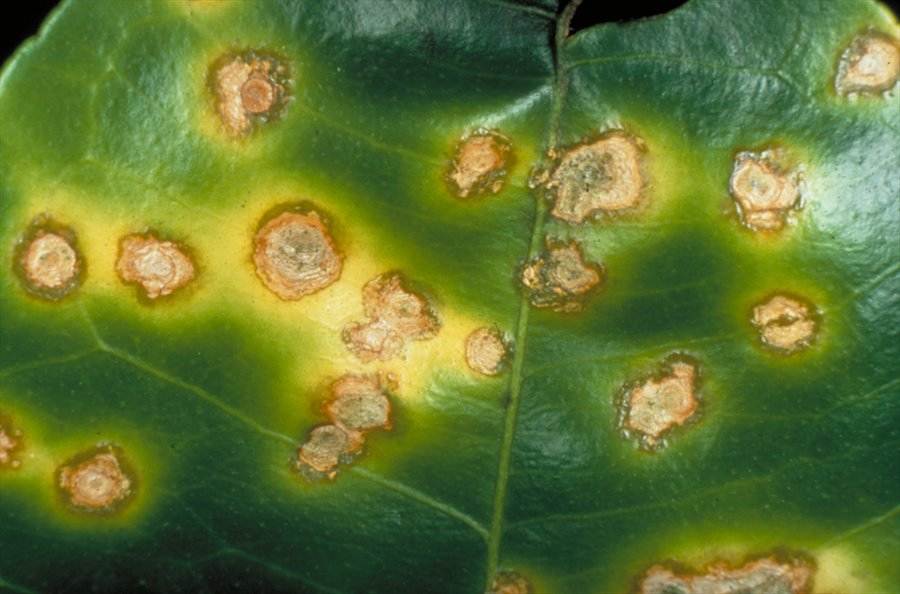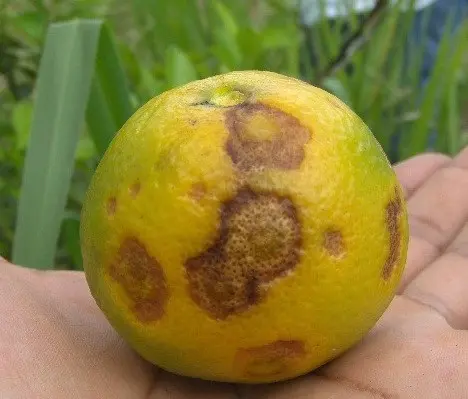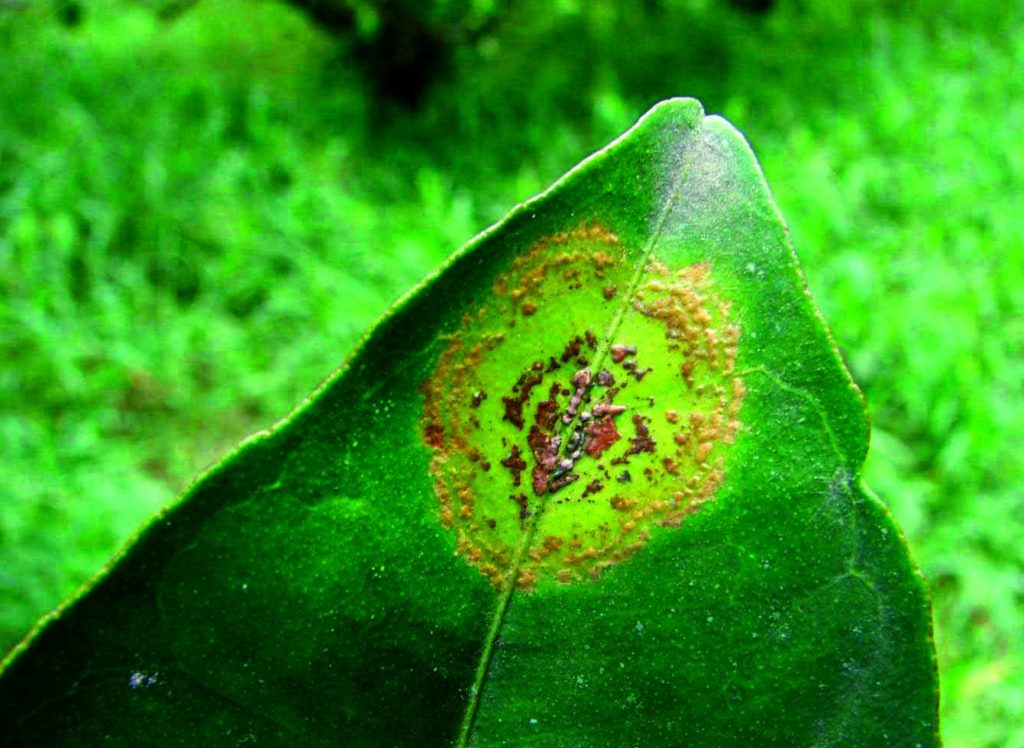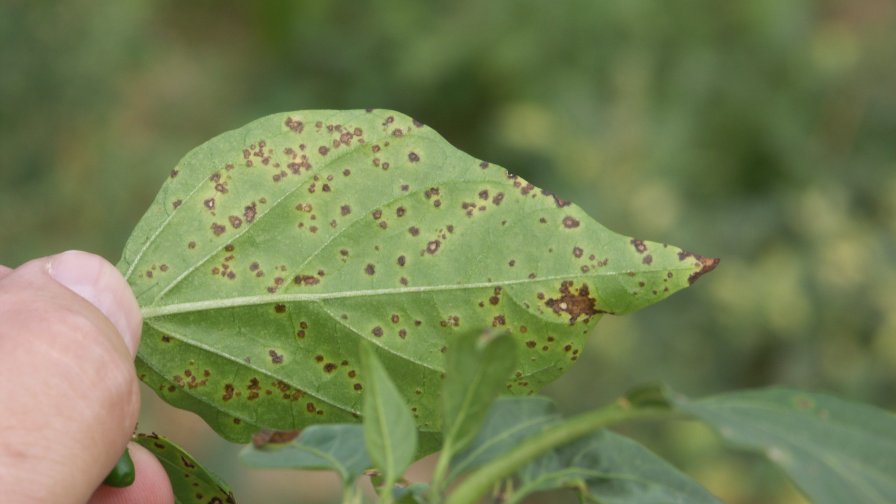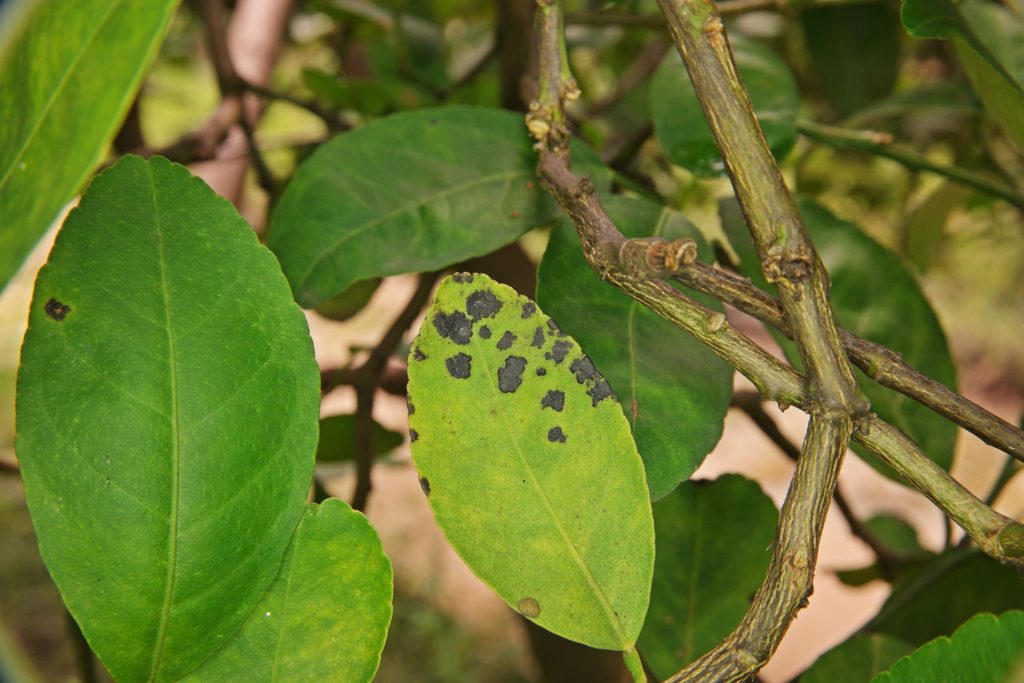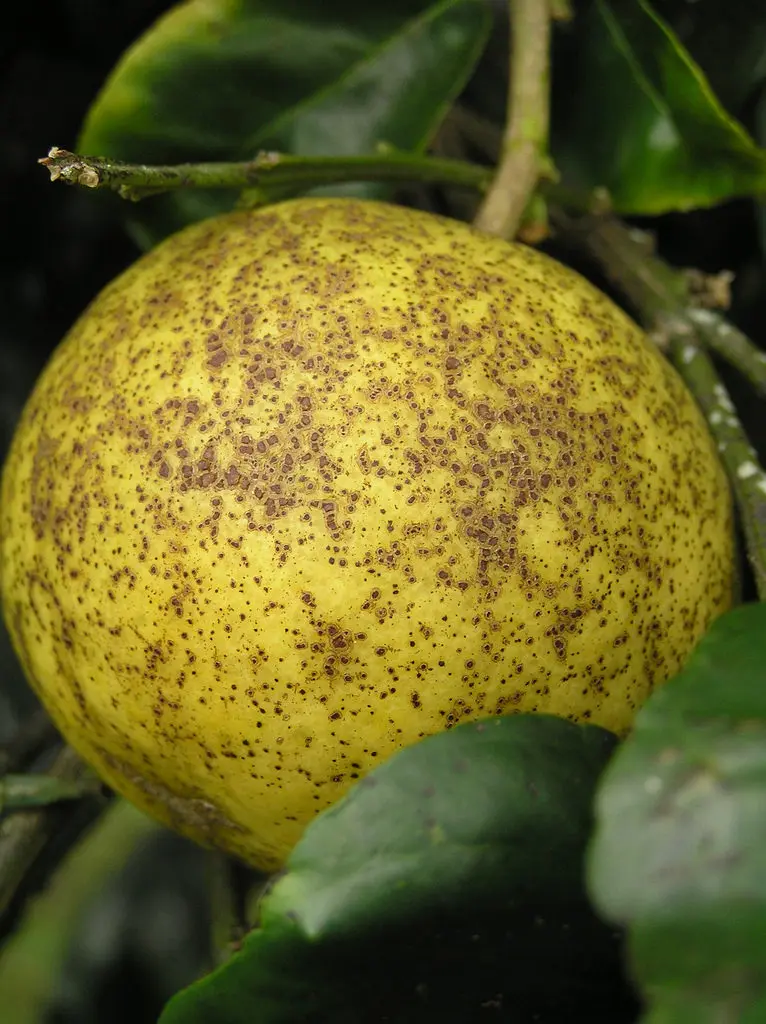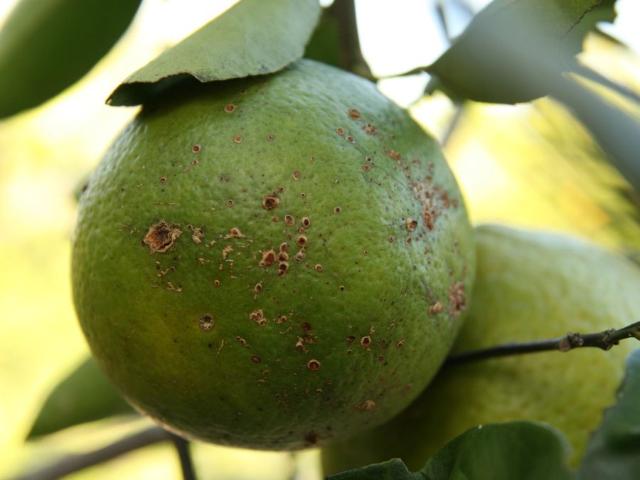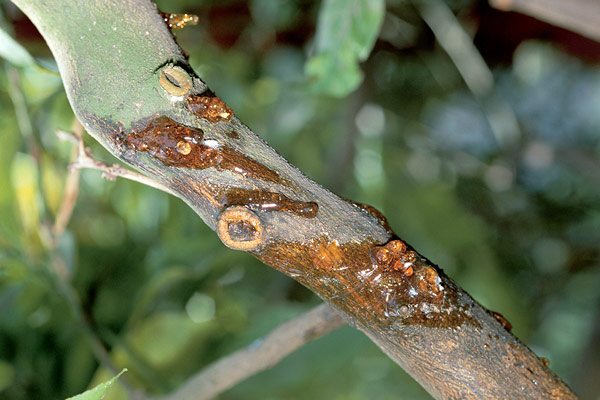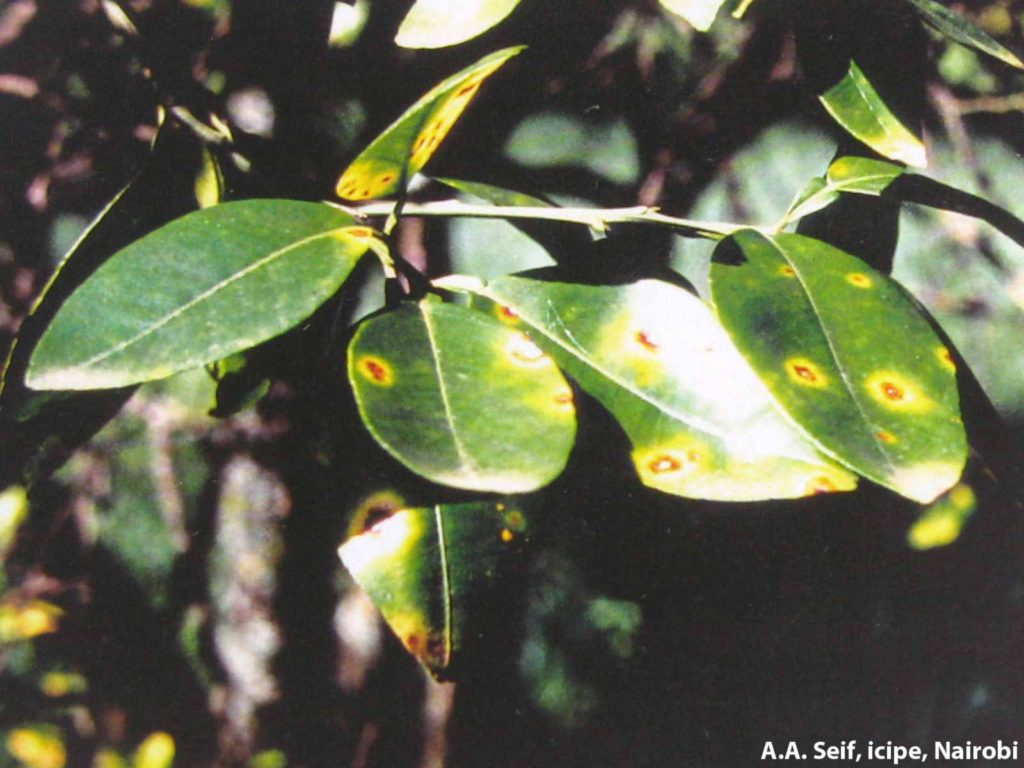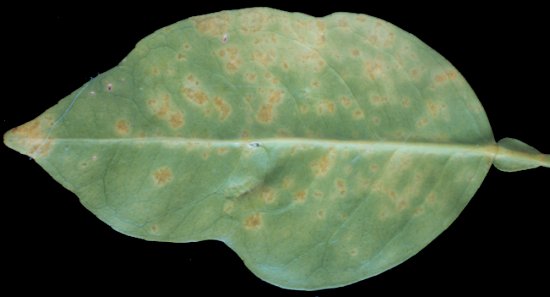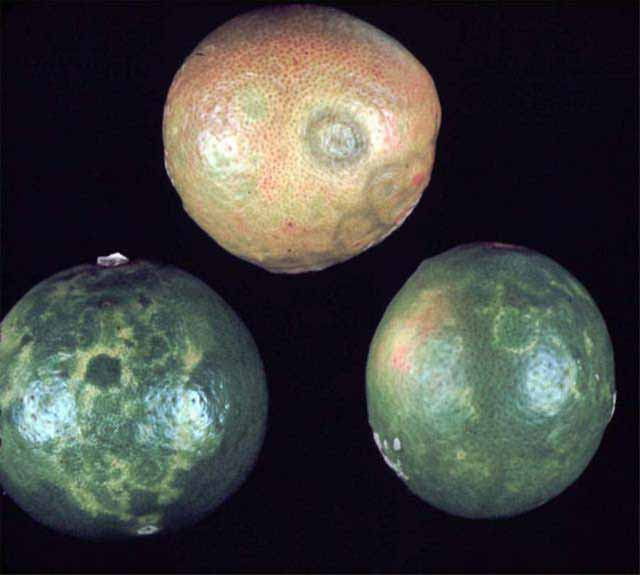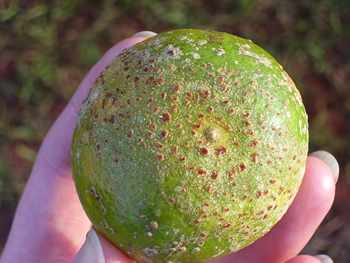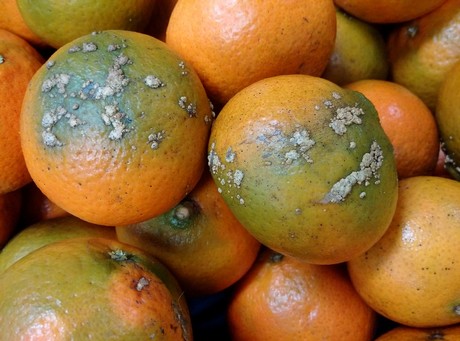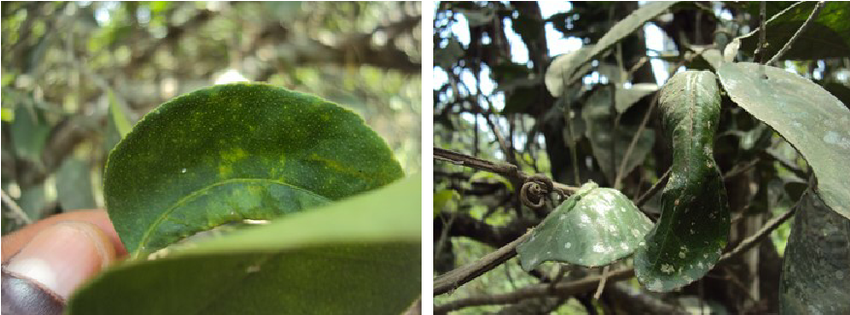The first defense against pests and disease is a healthy tree. Yarden citrus trees are grown in protective shadehouses and monitored closely to prevent pests and disease. Many Yarden citrus trees are grafted onto rootstocks known for their pest and disease resistance. But like all plants and trees, once they are in the open air, citrus trees can be affected by disease and insect damage. Proper citrus tree maintenance such as watering, pruning, spraying, weeding, and removing fallen fruit can help control most insects and diseases.
Need a New Citrus Tree?
-
 Improved Meyer Lemon TreeStarting at $39.95
Improved Meyer Lemon TreeStarting at $39.95 -
 Key Lime TreeStarting at $39.95
Key Lime TreeStarting at $39.95 -
 Cocktail Tree – Meyer Lemon / Key LimeStarting at $89.95
Cocktail Tree – Meyer Lemon / Key LimeStarting at $89.95
After selecting a healthy tree, the first step to keeping it healthy is nutrition. Our citrus care kits come complete with granular fertilizer and foliage sprays to give your tree the nutrition it needs. Pair that with a consistent pest prevention spray routine with neem or horticultural oil and you’ll be on your way to keeping your tree healthy and happy.
-
 3 Month Citrus Tree Care Kit$14.95
3 Month Citrus Tree Care Kit$14.95 -
 1 Year Citrus Tree Care Kit$29.95
1 Year Citrus Tree Care Kit$29.95
Citrus Tree Diseases
Like all plants and trees, citrus trees can be affected by disease and insect damage. There are some disease-resistant citrus tree varieties, and they are the best option for preventing many issues. Proper citrus tree maintenance such as watering, pruning, spraying, weeding, and removing fallen fruit can help control most insects and diseases.
Whether your tree is sick or healthy, make sure you’re providing it with the nutrients it needs. A good soil mixture and packet of plant food can give your tree the strength to fight off pests and diseases.
Citrus Scab
Citrus scab is caused by a fungus and it produces slightly raised, pink or brown scabs on fruit and leaves. As the infected areas progress, the scabs will change color to a dark grey, and often crack. The clear oval-shaped type of spores are spread by splashing rain and die when they become dry. The spindle-shaped form remain viable for a short time, and in addition to moving with splashed rain, can also travel short distances by wind.
Symptoms:
- Raised yellow or pink outgrowths on fruit or leaves
- Small growths on new shoots
Suggested Treatment:
- Copper
Citrus Variegated Chlorosis (CVC)
CVC is a bacterial disease caused by a subspecies of the Xylella fastidiosa bacterium. CVC is transmitted between citrus trees by several species of large leafhopper insects called sharpshooters. The disease can also be transmitted by grafting. Symptoms of CVC are very similar to nutrient deficiency since both result in yellowing of leaves. Early leaf symptoms of CVC closely resemble a deficiency of zinc, with yellowing areas between the veins of young leaves. As infected leaves mature, lesions become visible on the underside of the leaves opposite the yellowing areas on the leaf surface.
Symptoms:
- Yellow of young leaf surfaces
- Brown lesions on undersides of mature leaves
Suggested Treatment:
- Pruning
Citrus Black Spot
Citrus Black Spot is a disease caused by the fungal infection Guignardia citricarpa. Black Spot can reduce the quantity of fruit produced by a tree, as well as the quality of the fruit. Symptoms include black lesions on both the leaves and the fruit. All varieties of citrus are susceptible to citrus black spot fungus.
Symptoms:
- Black spots on mature fruit
- Cracked or oozing black spots in advanced stages
Suggested Treatment:
- Cooper
Huanglongbing (HLB) or Greening
HLB, or Greening, is thought to be caused by bacteria carried by psyllid insects. Greening causes leaf discoloration that appears as mottling in various shades of light green to yellow. The leaf discoloration of Greening can be distinguished from nutrition deficiencies because it crosses leaf veins and creates asymmetrical patterns upon the leaf surface. Fruit may also be affected, discolored, and may drop. Greening causes leaves to fall, small new growth to die, the decay of feeder roots, decline of tree health, and eventually tree death.
Symptoms:
- Asymmetrical leaf blotches
- Falling leaves
- Fruit drop
- Misshaped or discolored fruit
- Premature and random death of branches
Suggested Treatment:
- Removal of infected plants
- Foliar Micronutrient
- NPK
Citrus Greasy Spot
Greasy Spot is a fungus spread by wind. The fungus thrives when periods of continual wetness saturate decomposing fallen leaves. The fungus will then migrate into trees through splashing rain or wind, and infect living leaves. The symptoms include leaves with yellow spots, raised brownish blisters, and eventually, black lesions that have a greasy appearance.
Symptoms:
- Yellow leaf spots
- Brown blisters on leaves
- Black lesions that look greasy
Suggested Treatment:
- Copper
- Valet
- Foliar Micronutrient
Citrus Anthracnose
Citrus Anthracnose is a fungal infection that creates round, flat tan spots that have a purple outline. The fungus grows on dead wood in the citrus tree canopy and can travel short distances by rain splashing or overhead watering, where it can then infect new growth and young fruit.
Symptoms:
- Premature stem dieback
- Leaf drop
- Post-harvest fruit decay
Suggested Treatment:
- Azoxystrobin
- Zinc sulfate, copper sulfate, and hydrated lime
Citrus Canker
Citrus Canker is a bacterial infection caused by the pathogen Xanthomonas citri. This pervasive citrus tree disease creates circular lesions, or scabs, on citrus fruit, leaves, and twigs. Newer lesions are yellow, and more mature Citrus Canker lesions become brown. Citrus Canker is highly contagious and can be transmitted by wind-blown rain, or mechanically by pruning equipment, ladders, vehicles, and clothing. Citrus Canker causes necrotic dieback, tree decline, premature fruit drop, and blemished fruit. There are a variety of sprays designed to protect citrus trees from Canker infection, such as Liquid Copper Fungicide as a preventative treatment. However, already infected trees should be removed and destroyed to prevent further contamination from the contagious Citrus Canker disease.
Symptoms:
- Yellow lesions on fruit, leaves, and stems
- Brown lesions on undersides of mature leaves.
Suggested Treatment:
- Removal and destruction of infected trees
Citrus Leprosis
Citrus Leprosis, also called Nailhead Rust, Scaly Bark, or Nailhead Spot, is a virus transmitted by mites that cause lesions that are visible on both sides of the leaf. The lesions are round (ten to thirty millimeters across) and have a dark brown center where mites feed. The Citrus Leprosis virus is carried by the false spider mite (Brevipalpus) and since the virus can multiply within the mites, the mites can spread the virus to trees for the insect’s entire lifespan.
Symptoms:
- Small, round dark brown lesions on both leaf sides
- Yellow halo around lesions
Suggested Treatment:
- Miticide
Citrus Bacterial Spot
Citrus Bacterial Spot is only known to occur within the nursery environment. There are three classifications of the disease: aggressive, moderately aggressive, and weakly aggressive. Only aggressive isolates are spread by wind-blown rain and overhead irrigation. All other strains can be transported among trees in a nursery by the process of moving vehicles and workers through the nursery grounds. Citrus Bacterial Spot mainly affects leaves, and infections of fruit are rare. It is easily confused with canker.
Citrus Melanose
Citrus Melanose is an infectious fungus that lives on dead or decaying plant material. Infections of Melanose are caused when a substantial amount of the fungus is present on dead twigs or branches that are wet for an extended period of time, such as twenty-four hours or more, caused by either rain, or overhead watering. The fungus creates small brown spots on leaves. The Melanose spots evolve to exude a red-brown gum, and become raised bumps that stand above the surface of the leaf. As the fungus progresses, leaves take on a rough feel due to the numerous bumps. Severe Citrus Melanose infections result in the dieback of young shoots.
Symptoms:
- Small brown spots on leaves
- Brownish-red gum on leaves and stems
- Raised bumps on leaves
Suggested Treatment:
- Fungicide
- Copper
Citrus Alternaria Brown Spot
Citrus Alternaria Brown Spot is a fungus spread mainly by wind-driven spores. Spores grow on mature, wilted twigs and mature leaves and produce brown lesions on leaves and fruit. Citrus Alternaria Brown Spot can also be transported by the activities of pruning, picking, and transporting trees. Citrus Alternaria Brown Spot can affect the fruit quality as it creates pits, holes, and leaking depressions as the fungus lesions mature on the fruit. Tangerine varieties are particularly susceptible to Citrus Alternaria Brown Spot.
Symptoms:
- Brown spots on fruit
- Depressed and leaking spots in advanced stages
Suggested Treatment:
- Copper
- Strobilurin Fungicides
Citrus Phytophthora
Root Rot (also known as Brown Rot or Collar Rot) is a citrus tree disease caused by the soil-inhabiting fungus, Phytophthora. Root Rot symptoms include dark brown or black patches of hardened bark on the tree trunk, mainly at the base. It is also common for ooze to seep from the affected area. As citrus Root Rot advances, tree bark dries, cracks, and dies. The infected area is then left as a dark sunken crater or indention. As Root Rot progresses, it can cause the fruit to become brown and slowly decay. Leaves may also turn yellow and drop. Root Rot fungus exists in the soil and thrives in wet conditions, such as periods of flooding or excessive rainfall. The disease can then migrate to the tree from splashed or windblown dirt. To prevent citrus tree Root Rot, remove all decaying material such as leaves, dead weeds, and fallen fruit from the ground surrounding the tree base, and prune lower limbs to at least two feet above the ground. Spraying citrus trees including limbs and trunks with fungicide will also control Root Rot.
Symptoms:
- Peeling lower bark
- Brownish-red resin on trunk
- Leaf yellowing
Suggested Treatment:
- Fungicide
- Use of resistant rootstock
- Irrigation management
Citrus Pseudocercospora
Citrus Pseudocercospora, also known as Phaeoramularia Fruit and Leaf Spot (PFLS) or Angular Leaf Spot, is caused by the fungus Pseudocercospora angolensis. The spores require moisture to propagate and are spread by both wind and mechanical means such as transportation of infected trees or the movement of leaves when pruning and removing branches. The fungus produces flat, light brown to red lesions that have grey centers and mainly affect leaves but can also appear on fruit. The lesions often appear amid a field of leaf yellowing.
Citrus Psorosis
Citrus Psorosis is a citrus disease caused by multiple viruses of the family Ophioviridae. Citrus Psorosis produces an escalating array of symptoms that include yellow spots on leaves, low fruit yields, small circles surrounded by sunken grooves on fruit rinds, and eventually, scale and sticky deposits forming on bark along with deep grooves or pits in trunks and large limbs. The Citrus Psorosis virus may reside in a tree for up to ten years without any noticeable symptoms. The disease is largely transferred through bud grafts, and as such, has been greatly controlled through the application of industry bud material inspection and certification programs.
Symptoms:
- Yellow spots or irregular blotches on leaves
- Circles with sunken grooves on rind
- Deeply grooved trunks or pitted branches
Suggested Treatment:
- Prevented by proper budwood certification
- Severely infected, older trees removed and destroyed
Sweet Orange Scab
Sweet Orange Scab is a fungal infection of citrus fruits caused by the fungus Elsinoe australis. The fungus affects the appearance of mostly fruit rinds, and less often, young twigs and leaves. The disease does not affect the quality or taste of the fruit but may cause some fruit to drop prematurely, particularly on younger trees. The spores require moisture to reproduce and are often spread during rain.
Symptoms:
- Unattractive scab-like outgrowths on fruit rind exterior
- Sometimes similar scabs appear on twigs and leaves
Suggested Treatment:
- Copper Spray
Citrus Tristeza
Citrus Tristeza, also known as Quick Decline or QD, is a virus carried and delivered to citrus trees by aphids. Aphids such as the brown citrus aphid contract the virus when feeding on a QD-infected citrus tree. The Citrus Tristeza virus can also be spread or, in effect, multiplied through the process of grafting stock for new trees. Many strains of the Citrus Tristeza virus exist, and their effects range from slight, ineffectual damage to rapid decline of tree health and resulting death.
Symptoms:
- Cupping of leaves
- Leaf vein corking
- Leaf flecking
- Pitting of stems
- Deep pitting of trunk
Suggested Treatment:
- Treatment and control of Aphids
- Careful inspection for QD symptoms when grafting
Sooty Mold
Sooty mold is a black leaf fungus that is the symbiotic result of mold forming on leaves where honeydew secretions from insects like whiteflies, aphids, and mealybugs provide the ideal nutrition and harborage for the fungus to grow. Therefore, controlling those insects is the most efficient way to control Sooty Mold on citrus. Spray citrus trees with an insecticide formulated to control whiteflies, mealybugs, and aphids, and be sure to spray both the top and undersides of the leaves. To control and eliminate established Sooty Mold, spray the tree with Liquid Copper Fungicide.
Protect Your Plants!
Treat your plant with care! Shop Yarden’s Care Kits and buy a three-month supply of everything you need to ensure your tree thrives. From nutrition spray to the perfectly balanced fertilizer, these kits will keep your citrus tree happy — whether it’s a Lemon or a Limequat.
Citrus Tree Insects & Pests
Citrus Whitefly
The Citrus Whitefly (Dialeurodes citri) is a small fly that is dependent on new citrus foliage growth for development and reproduction. Citrus Whiteflies feed on the underside of citrus tree leaves and will take flight in swarms when an infected branch is disturbed. Whitefly larvae create honeydew when sucking sap from leaves, which in turn creates Sooty Mold, and attracts other insects. Several generations of Citrus Whitefly can propagate over a single growing season. Since adults fly, it is difficult to control an entire Citrus Whitefly population. Therefore, insecticide spraying to control Whitefly juveniles is the most effective means of treating infected citrus trees.
Aphids
Aphids are tiny insects and nearly all individuals are egg-laying females that produce live young. Males are only needed to produce over-winter capable eggs, so hatching and growing Aphids can create rapid infestations. Because of this, Aphid populations can grow quickly and cause serious damage. Aphid outbreaks are especially fond of succulent new growth. Aphids attack the tree by sucking the sap from leaves. An affected citrus tree will quickly form curled leaves, leaf yellowing, colonies of aphids, and the attendant dripping honeydew will become visible. This can attract ants, as well as Sooty Mold. Eventually, leaves will die, and twigs will rot and fall off. Aphids can be controlled using insecticides and insecticidal soap on infected areas and treating both tops and undersides of leaves, and all branches and twigs.
Citrus Thrips
When a tree is infected with Citrus Thrips the most visible sign of the infestation is curled, enclosed, or shriveled leaves. Citrus Thrips are tiny orange, yellow, or even black insects that can attack trees at any age. Thrips attack young leaves and juvenile fruit and feed on the citrus tree sap. Adult Citrus Thrips lay eggs in the fall and the juvenile insects hatch in spring. To control Citrus Thrips spray the tree with Garden Insect Spray with Spinosad. Repeat spray applications may be required every two weeks. Keep the tree well irrigated and properly fertilized, because a vigorous tree is less susceptible, although not immune, to Citrus Thrips.
Orangedog Caterpillars
The Orangedog Caterpillar is a large, brown, green, and white caterpillar about two inches long. The markings create a clever mimic of bird droppings and an effective deterrent to predators. The Orangedog Caterpillar is the juvenile stage of the black and yellow swallowtail butterfly, common throughout Florida and the tropics. The adult butterfly lays her eggs on new citrus leaves and, as the eggs hatch and new caterpillars emerge, they consume leaf flesh. In sufficient numbers, Orangedogs can defoliate an entire tree. To control the Orangedog Caterpillar, physically remove and destroy the caterpillars by hand. When disturbed, the caterpillars may push out two red horn antennas from just behind their head that emit a strong, foul smell. Severe Orangedog Caterpillar infestations can be controlled by spraying with an insecticide that contains either Spinosad, or Bacillus thuringiensis (BTK). Both insecticides are made from naturally occurring bacteria. Spray the entire tree. It is possible that a second spraying may be required in a month or so, depending on the severity of the infestation.
Snails
Snails will eat leaves, fruit rinds, and sometimes, citrus tree bark. Snails can be detected visually, or by spotting the damage created as they feed. Snails use leaves on the ground for breeding grounds and as cover. Therefore, to control snails, it is important to remove fallen leaves and fruit from around and under the trees. Also, it is a good idea to prune any low branches that may touch the ground, to keep snails from easily accessing citrus tree interiors. Slug and Snail Bait can be applied to the soil surface to control snail growth and movement.
Brown Soft Scale
Brown Soft Scale is caused by a small insect that attaches itself permanently to citrus tree branches, trunks, leaves, and fruit. Brown Soft Scale insects suck sap from the tree and cause leaves to yellow then drop. Brown Scale also produces honeydew secretion that is conducive to the growth of Sooty Mold.
To control Brown Soft Scale insects, spray horticultural oil to suffocate the scale and eggs. Crawling nymphs only emerge in early summer, so trees can be treated with insecticides at that time to prevent further infestation.
Citrus Bud Mites
Citrus Bud Mite is a tiny, elongated insect that mainly attacks lemon trees located in coastal areas. The lemon blooms are very susceptible because the Citrus Bud Mite attacks the delicate blossom and new leaves, feeding on sap. To control Citrus Bud Mites spray the tree with insecticide such as Bug Buster or Trounce.
Citrus Red Mites
Like Citrus Bud Mites, Red Mites are tiny insects that feed on new growth and sometimes even fruit. The Citrus Bud Mite is red or purple and often inhabits the underside of mature leaves or the delicate folds of emerging foliage. Severe infestations can cause leaf drop, low yields, and poor tree health. To control Citrus Bud Mites spray trees thoroughly with insecticides such as Bug Buster or Trounce.
Need a new tree?
-
 Improved Meyer Lemon TreeStarting at $39.95
Improved Meyer Lemon TreeStarting at $39.95 -
 Key Lime TreeStarting at $39.95
Key Lime TreeStarting at $39.95 -
 Cocktail Tree – Meyer Lemon / Key LimeStarting at $89.95
Cocktail Tree – Meyer Lemon / Key LimeStarting at $89.95
If all else fails, it may be time to shop for a new citrus tree. Fortunately, Yarden offers a wide selection of citrus (and non-citrus) plants. Shop our collections of hardy lemon trees and beautiful olive trees to fill the gap in your garden.

